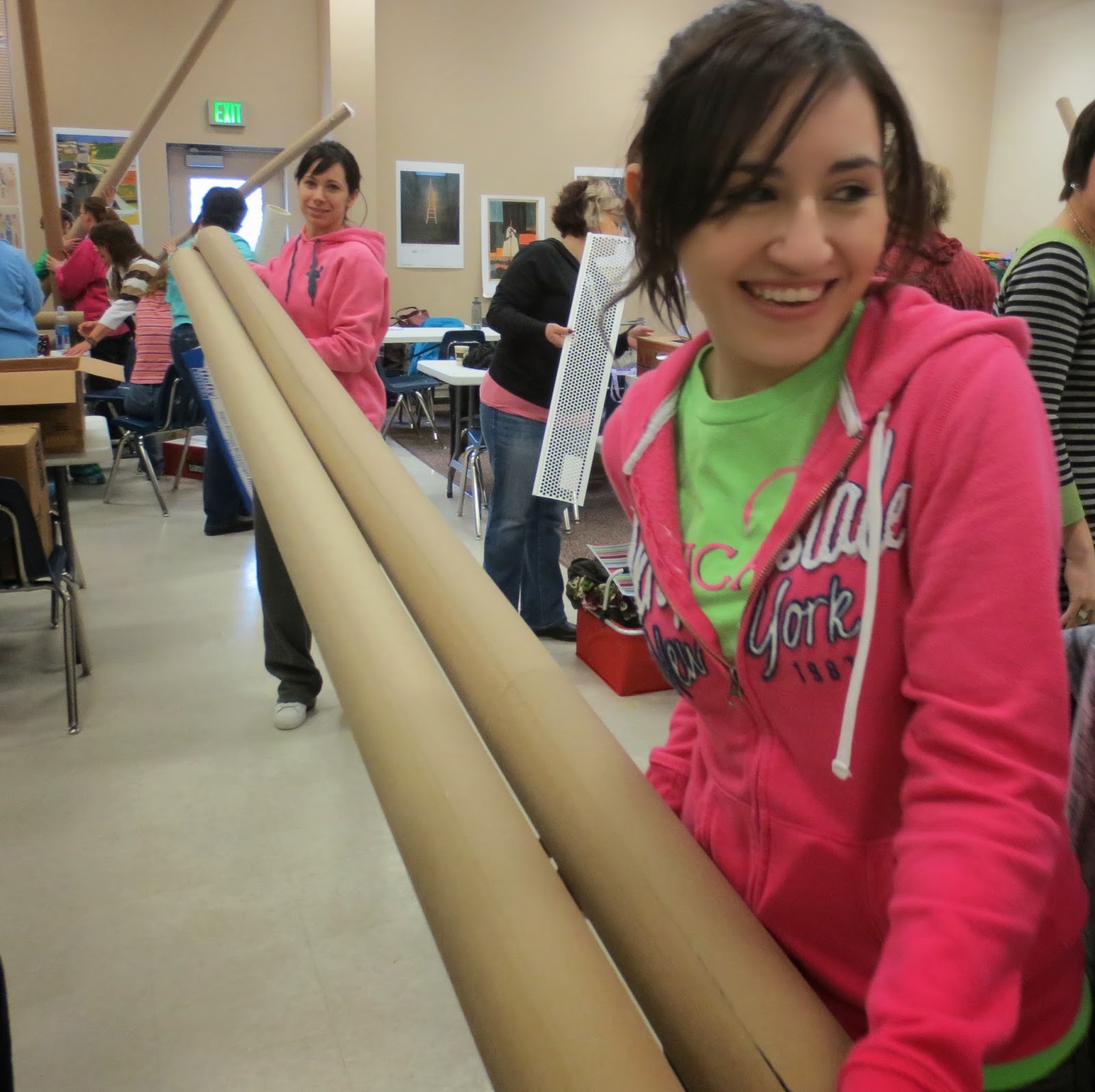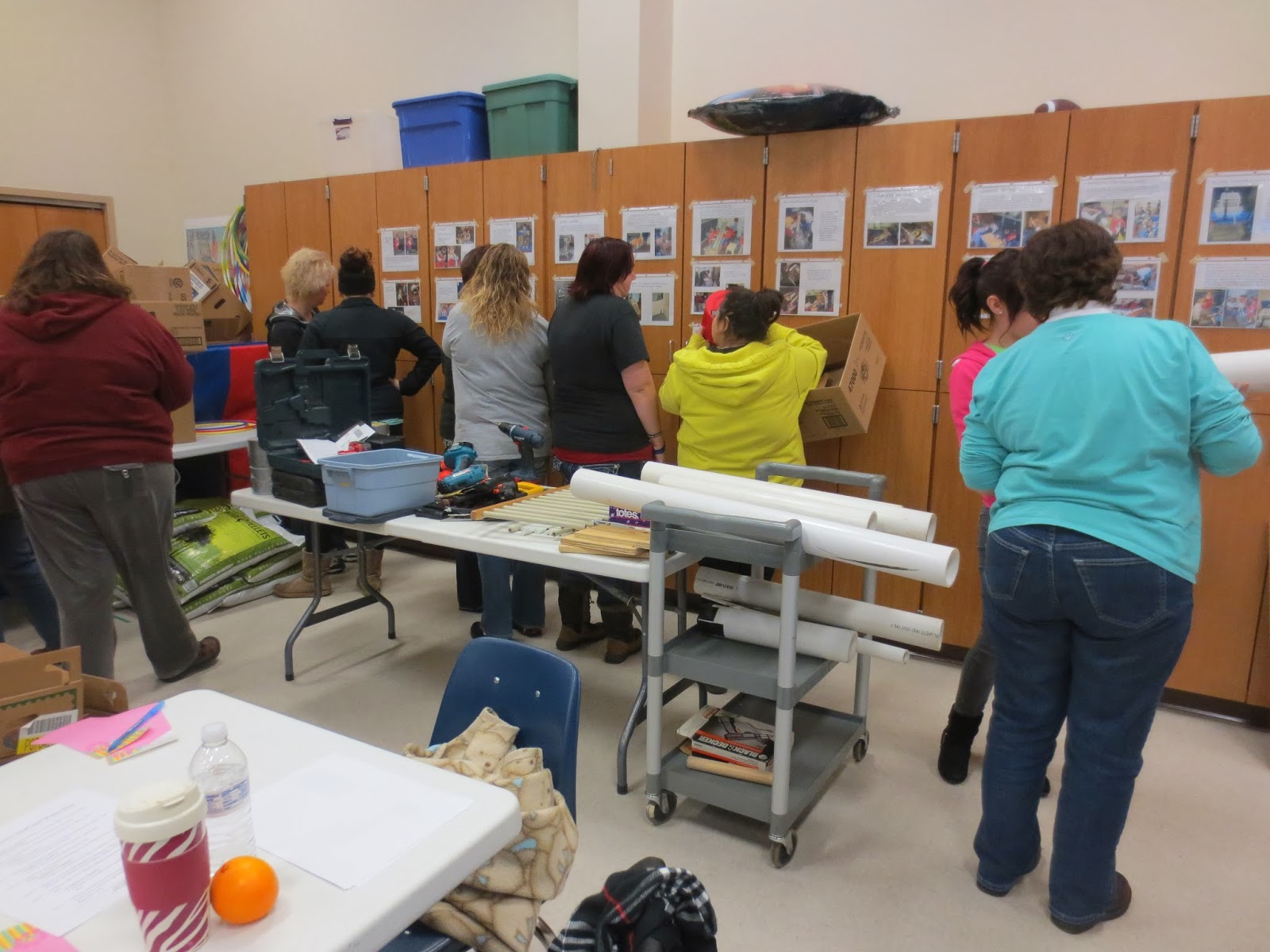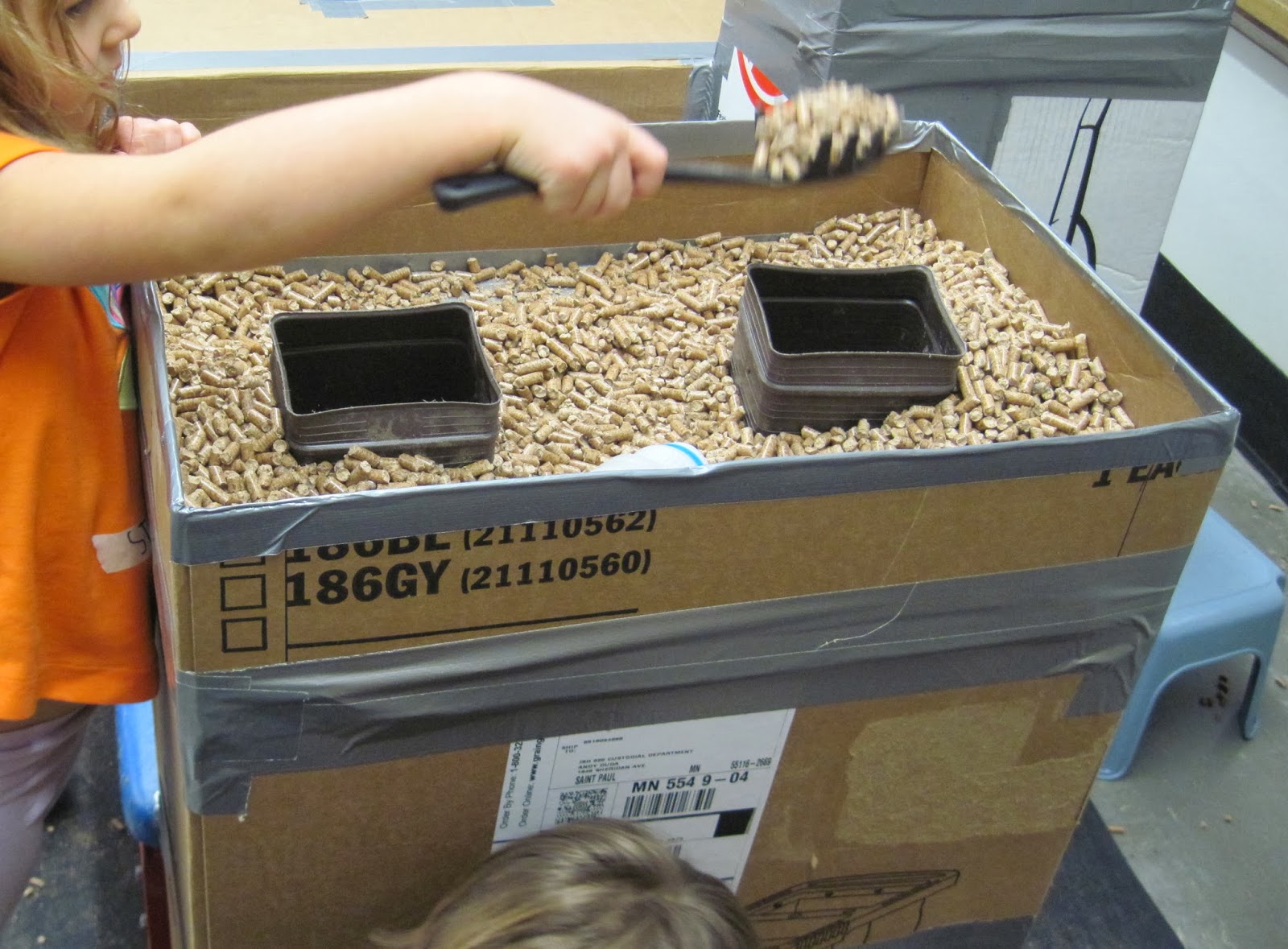The day before the workshop Shirley and Karen, the director, gave me a tour of the Head Start building. The first room I saw was the room I was to present in. It was a large room because they were expecting about 60 or so staff. Right away I noticed they had a small hill of boxes, a stack of long cardboard tubes and a table of tools and tape. I knew they were ready.
They also showed me around the center. The first thing I looked at when I went into each of the rooms was the set up for their sensory tables. That was good because then I could do a few last minute changes to my presentation to include ideas to think about when setting up a sensory area. A couple of years ago, I did a post on set up for the sensory table. It is called: Taking My Own Advice.
One of the things I like to do in my workshops is post documentation on the walls or cabinets. There are two reasons for that. As people come in, they have something concrete to look at to prime the pump of their imagination. The second reason is to display additional apparatus accompanied by written explanations that are not in the presentation.
You can see the documentation on the cabinets in the back. You can also see the table of tools and cart of PVC pipes. And if you look to the left at the end of the cabinets behind the colorful mat, you can see the small hill of boxes.
As the staff arrived on a cold and snowy morning, they brought more tools, more boxes and a variety of other materials to build with. Clearly they had already thought about possibilities for building.
And build they did. Most of the participants started out in the big room using the power tools. That surprised me because I thought we would start out using just utility knives and duct tape. I quickly realized this was not a timid group.

Some of the staff had never used power tools before but they went right to work. To use a drill or a big saw for the first time must be empowering.
At one point early on, there was a line waiting to use the power tools.
Staff who were housed in the building left the big room to work in their own classrooms.

And work they did.
Others stayed in the big room, especially those who wanted to be close to the tools and whose classrooms are located off site.
For an hour and a half, I witnessed a whole lot of negotiation, collaboration and cooperation. And to do any kind of constructing like this, they had to do a great deal of problem solving.
To realize their ideas must have been extremely validating. It was sure a delight to see what they built. Here is a sample.
When children approach a venture, they are only limited by their imagination. Since their imagination is unlimited, they have no limits except those imposed by the materials themselves. Maybe for adults the same tenet is true. The important thing, then, is to start.
Thank you to all the participants at Minot Head Start. Though there are limits imposed by the materials used in the building, the intersection of the properties of those same materials and the imagination of the builders is stunning. The proof is embodied in the new and exciting constructions created by the Head Start staff in Minot. A special thanks to Shirley and Karen for inviting me to do this work with their staff.
P.S. I will be traveling to the UK this summer for three weeks starting the second week in June. The first week I will be in Scotland and then I will work my way down to London. If you are at all interested in hosting a workshop, please contact me via the blog or email: tpbedard@msn.com I am willing to go to individual centers or have centers club together. Since I am already in the UK, the expense of getting me there is off the table so hopefully I can make it affordable for groups of 10 or more. Contact me and we can negotiate. I will also be visiting old friends in the Netherlands for a couple of days---June 28 - July 1--- so I am also willing to do a workshop or two in the Netherlands or Belgium. Again, contact me if you are interested.






















.jpg)













